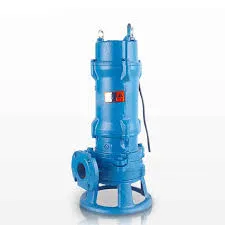Azerbaijani
- Afrikaans
- Albanian
- Amharic
- Arabic
- Armenian
- Azerbaijani
- Basque
- Belarusian
- Bengali
- Bosnian
- Bulgarian
- Catalan
- Cebuano
- Corsican
- Croatian
- Czech
- Danish
- Dutch
- English
- Esperanto
- Estonian
- Finnish
- French
- Frisian
- Galician
- Georgian
- German
- Greek
- Gujarati
- Haitian Creole
- hausa
- hawaiian
- Hebrew
- Hindi
- Miao
- Hungarian
- Icelandic
- igbo
- Indonesian
- irish
- Italian
- Japanese
- Javanese
- Kannada
- kazakh
- Khmer
- Rwandese
- Korean
- Kurdish
- Kyrgyz
- Lao
- Latin
- Latvian
- Lithuanian
- Luxembourgish
- Macedonian
- Malgashi
- Malay
- Malayalam
- Maltese
- Maori
- Marathi
- Mongolian
- Myanmar
- Nepali
- Norwegian
- Norwegian
- Occitan
- Pashto
- Persian
- Polish
- Portuguese
- Punjabi
- Romanian
- Russian
- Samoan
- Scottish Gaelic
- Serbian
- Sesotho
- Shona
- Sindhi
- Sinhala
- Slovak
- Slovenian
- Somali
- Spanish
- Sundanese
- Swahili
- Swedish
- Tagalog
- Tajik
- Tamil
- Tatar
- Telugu
- Thai
- Turkish
- Turkmen
- Ukrainian
- Urdu
- Uighur
- Uzbek
- Vietnamese
- Welsh
- Bantu
- Yiddish
- Yoruba
- Zulu
Telephone: +86 13120555503
Email: frank@cypump.com
Sen . 25, 2024 20:04 Back to list
'comparison between axial and mixed flow pumps for water ...'
Comparison Between Axial and Mixed Flow Pumps for Water Applications
When it comes to the efficient movement of water, the selection of pumps plays a critical role in ensuring optimal performance and energy efficiency. Two prominent types of pumps used in various applications are axial flow pumps and mixed flow pumps. Each has distinct characteristics, advantages, and disadvantages that make them suitable for specific tasks. This article explores the differences between axial and mixed flow pumps, highlighting their design, operation, applications, and overall performance.
Design and Operation
Axial flow pumps are designed to transmit fluid in a direction parallel to the pump shaft. The pump comprises a rotor (impeller) and a diffuser. The rotor propels the water in a straight line, utilizing the blades' angle and pitch to generate flow. The design is relatively simple, resulting in a lower number of components which can minimize maintenance requirements.
On the other hand, mixed flow pumps utilize a combination of axial and radial flow principles. In these pumps, the impeller's design allows for water to be both pushed axially and radially, giving them the ability to handle higher pressure heads compared to purely axial flow pumps. The mixed flow design helps in achieving a balance between flow rate and pressure, making them versatile for various applications.
Performance Characteristics
When evaluating the performance of axial and mixed flow pumps, one must consider parameters such as flow rate, efficiency, and head. Axial flow pumps are known for their ability to move large volumes of water at low heads efficiently. They are particularly effective in applications requiring high discharge rates, such as irrigation, drainage, and cooling water intake services.
Conversely, mixed flow pumps provide a greater ability to handle varying flows and pressures, making them suitable for applications such as flood control, water supply systems, and wastewater treatment
. Their mixed flow nature enables them to operate efficiently across a range of conditions, providing reliable performance when moving fluids that may contain varying solids or debris.'comparison between axial and mixed flow pumps for water ...'

Applications
Each pump type has specific applications where they excel due to their inherent characteristics. Axial flow pumps are commonly used in agricultural applications for irrigation and drainage, as well as in municipal water supply systems. Their ability to handle large volumes with relatively low energy requirements makes them ideal for these tasks.
Mixed flow pumps, given their versatility, are used in a wider range of applications. They are effective in sewage treatment facilities, where handling mixed wastewater flows is paramount. Moreover, they are frequently employed in power generation plants, where they can supply cooling water to turbines and other equipment operated at different pressure levels.
Advantages and Disadvantages
Both pump types come with sets of advantages and disadvantages. Axial flow pumps are simple in design, which translates to easier maintenance and lower operational costs. However, they can suffer from cavitation issues at lower pressures and are less effective in applications requiring high pressure.
Mixed flow pumps provide the flexibility of handling a range of pressures and flows, making them suitable for more diverse applications. However, their complex design can lead to higher maintenance requirements and costs. Additionally, they might not achieve the same high flow rates as axial flow pumps under certain conditions.
Conclusion
In conclusion, the choice between axial and mixed flow pumps for water applications depends on specific requirements, including flow rates, pressure needs, and the nature of the fluid being pumped. Understanding the fundamental differences, operational characteristics, and performance metrics of each type of pump is crucial for selecting the right technology for a given application. By weighing the benefits and drawbacks of axial versus mixed flow pumps, engineers and operators can ensure they make informed decisions that lead to enhanced efficiency, reduced costs, and optimized water management solutions.
-
Heavy-Duty Mining Sludge Pumps - Wear-Resistant Slurry Handling
NewsAug.02,2025
-
Horizontal Split Case Pump with GPT-4 Turbo | High Efficiency
NewsAug.01,2025
-
ISG Series Pipeline Pump - Chi Yuan Pumps | High Efficiency, Durable Design
NewsAug.01,2025
-
Advanced Flue Gas Desulfurization Pump with GPT-4 Turbo | Durable & Efficient
NewsJul.31,2025
-
ISG Series Vertical Pipeline Pump - Chi Yuan Pumps | Advanced Hydraulic Design&Durable Construction
NewsJul.31,2025
-
ISG Series Vertical Pipeline Pump - Chi Yuan Pumps | Energy Efficient & Low Noise
NewsJul.31,2025










